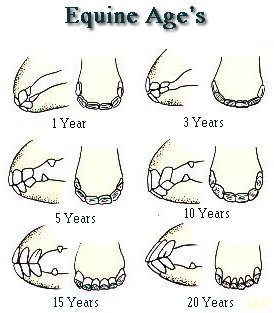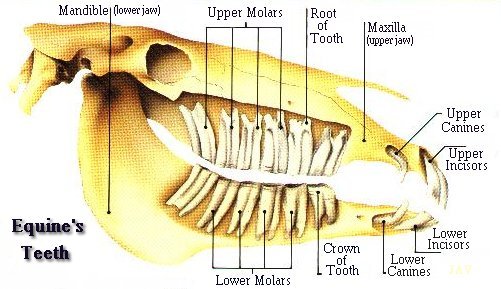| Home Medical Index | First Posted May 2007 Jan 21, 2020 | |
Equine TeethEvolution Of The Horse Video Horses are adapted to grazing. In an adult horse, there are 12 incisors (six upper and six lower), adapted to biting off the grass or other vegetation, at the front of the mouth. There are 24 teeth adapted for chewing, the premolars and molars, at the back of the mouth. Stallions and geldings have four additional teeth just behind the incisors, a type of canine teeth that are called "tushes." Some horses, both male and female, will also develop one to four very small vestigial teeth in front of the molars, known as "wolf" teeth, which are generally removed because they can interfere with the bit. There is an empty interdental space between the incisors and the molars where the bit rests directly on the bars (gums) of the horse's mouth when the horse is bridled. The incisors show a distinct wear and growth pattern as the horse ages, as well as change in the angle at which the chewing surfaces meet. The teeth continue to erupt throughout life as they are worn down by grazing, and while the diet and veterinary care of the horse can affect the rate of tooth wear, a very rough estimate of the age of a horse can be made by looking at its teeth. The University of Minnesota Veterinary Anatomy Courseware Section is an incredible site. This is the best explanation having to do with a horse's teeth that I have ever seen. I want to share this information with everyone who may be searching for a site that could answer all their questions. This is the site. Enjoy!
  |